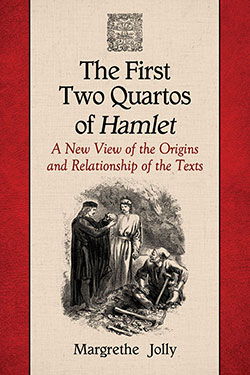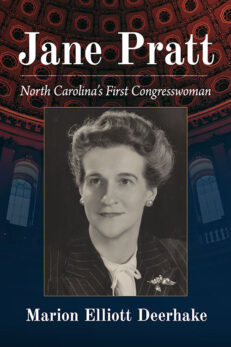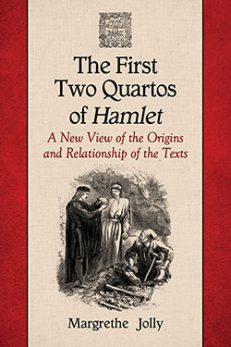The First Two Quartos of Hamlet
A New View of the Origins and Relationship of the Texts
$29.95
In stock
About the Book
It is nearly two centuries since the first quarto of Hamlet was rediscovered, yet there is still no consensus about its relationship to the second quarto. Indeed, the first quarto, the least frequently read Hamlet, has been dismissed as “corrupt,” “inferior” or like “a mutilated corpse,” even though in performance it has been described as “the absolute dynamo behind the play.” Currently one hypothesis dominates explanations about the quartos’ interrelationship, supposing that the first quarto (published 1603) was reconstructed from memory by one or more actors who had performed minor roles in a version of the second quarto (published 1604–5).
The present study reports on a detailed linguistic reassessment of the principal arguments for memorial reconstruction. The evidence—including a three way comparison between the underlying French source in Les Histoires Tragiques and the two quartos, and the informal features and specific grammatical aspects, and a documented memorial reconstruction in 1779—does not support the dominant hypothesis. The cumulative evidence suggests that the earliest scholars to examine the first quarto were right: the 1603 Hamlet came first, and the second quarto is a substantial, later revision.
About the Author(s)
Bibliographic Details
Margrethe Jolly
Format: softcover (6 x 9)
Pages: 256
Bibliographic Info: appendices, notes, bibliography, index
Copyright Date: 2014
pISBN: 978-0-7864-7887-3
eISBN: 978-1-4766-1556-1
Imprint: McFarland
Table of Contents
Table of Contents
Acknowledgments vi
List of Tables ix
Preface 1
Key Abbreviations, Nomenclature and Conventions Used in the Text 5
Introduction: Nineteen Going on Thirty 7
Part One: Which Came First, Q1 or Q2 Hamlet?
1. Dating and Measuring: Initial Evidence 15
2. Les Histoires Tragiques and the Quartos 32
3. Les Histoires Tragiques, the Quartos and Evolving Ideas 44
4. Hamlet’s Return, Nashe and Some Binge Drinking 53
5. Just Like Ben Jonson 62
Part Two: How Certain Is Memorial Reconstruction?
6. Printing, and Contemporary Complaints about Piracy 77
7. Memorial Reconstruction in England 89
8. The Spanish Tragedy, and Duthrie’s “Objectionable Pronouns” 102
9. Corpses, Stage Directions and Other Anomalies 114
10. Memorial Reconstruction—or Abridgement? 129
Part Three: Was There an Ur-Hamlet?
11. “Hamlets” and the Elizabethan Æsop 143
12. Meres and a Contradiction of Scholars 160
Conclusion: Closing with the Consequences 177
Appendix A: Colloquialisms—Q1 and Q2 195
Appendix B: Table of Comparisons from Les Histoires Tragiques, Q1 and Q2 199
Appendix C: A Summative, Four Way Comparison Between Les Histoires Tragiques, Q1, Q2 and F Hamlet 211
Chapter Notes 219
Bibliography 231
Index 237
Book Reviews & Awards
“a model of careful scholarship…an important work of research”—Shakespeare Oxford Newsletter; “invaluable contribution to the study of Shakespearean texts…interesting and thought-provoking read”—Paregon.





